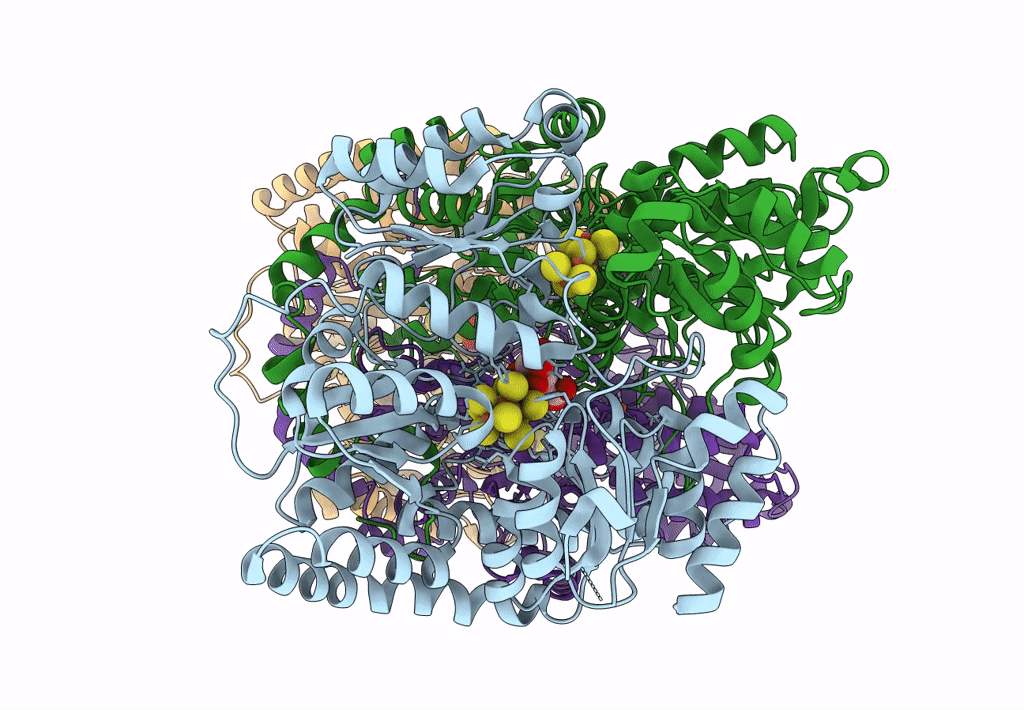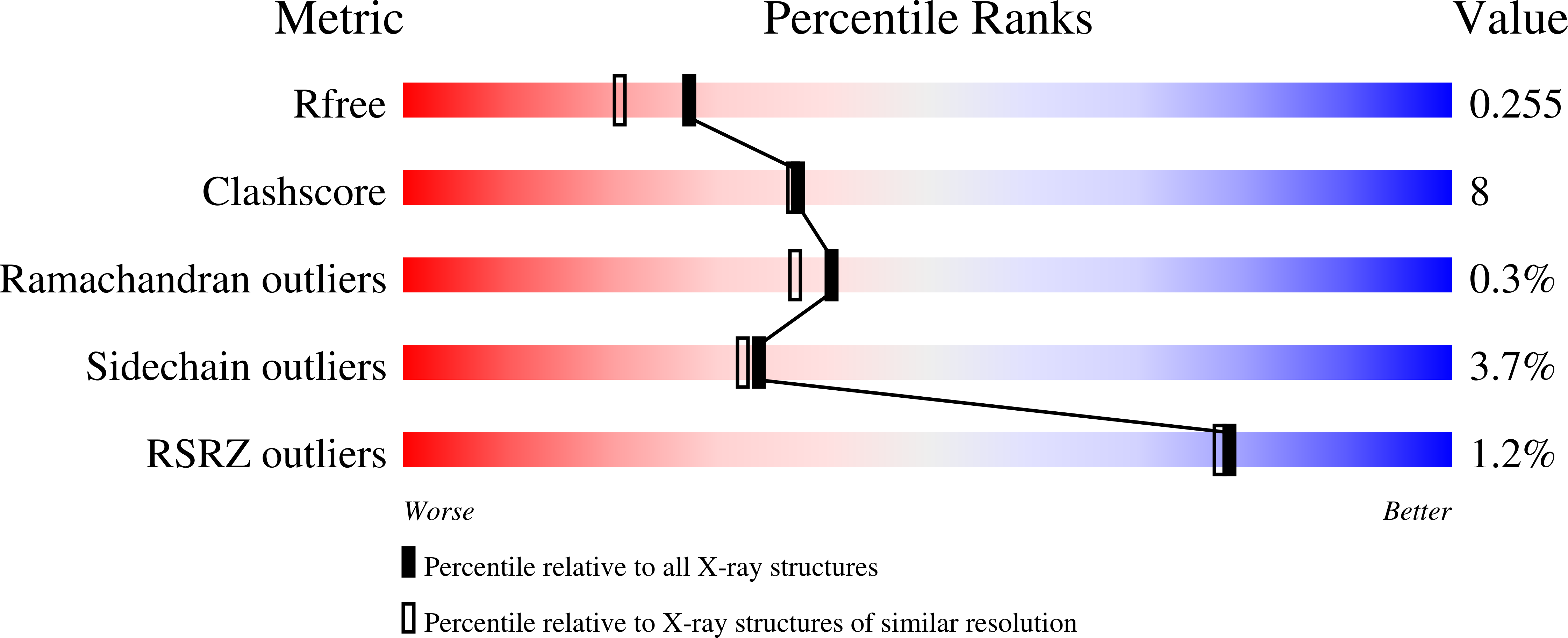
Deposition Date
2022-08-17
Release Date
2022-12-14
Last Version Date
2023-10-25
Entry Detail
PDB ID:
8E3U
Keywords:
Title:
Nickel-reconstituted nitrogenase MoFeP mutant S188A from Azotobacter vinelandii after IDS oxidation
Biological Source:
Source Organism:
Azotobacter vinelandii DJ (Taxon ID: 322710)
Host Organism:
Method Details:
Experimental Method:
Resolution:
1.99 Å
R-Value Free:
0.25
R-Value Work:
0.20
R-Value Observed:
0.20
Space Group:
P 1 21 1


